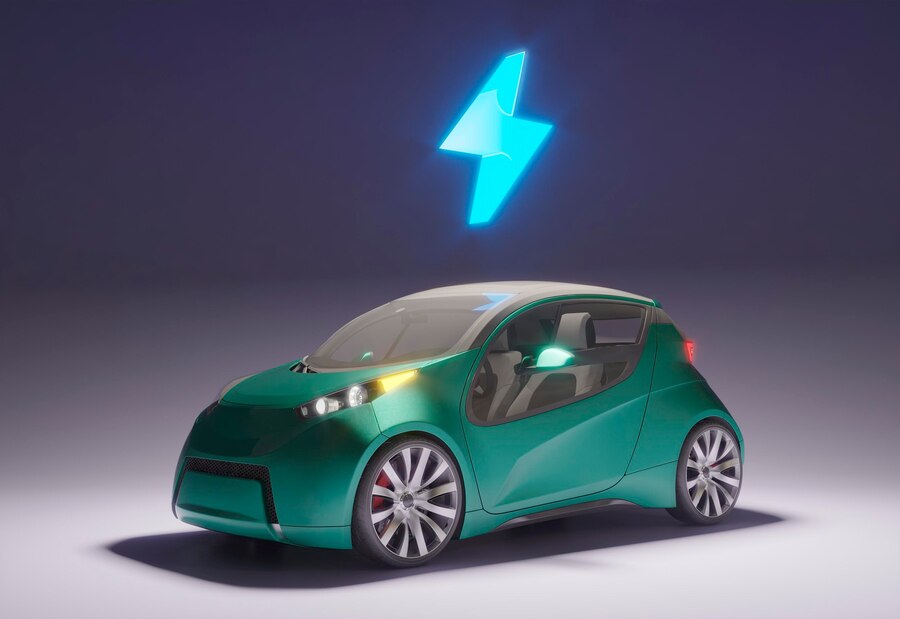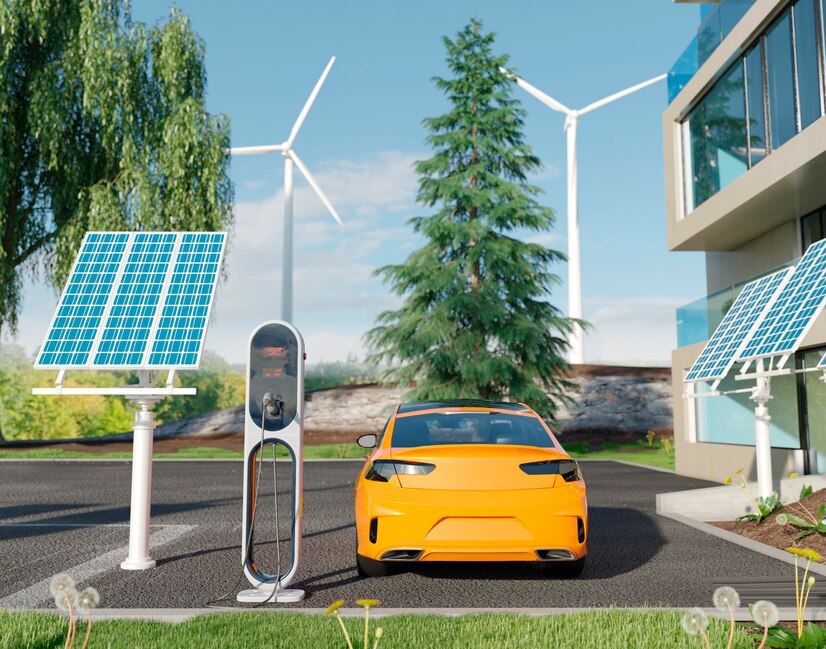Introduction
The automotive industry is undergoing a significant transformation in the 21st century as electric vehicles (EVs) take center stage in the global effort to combat climate change and reduce fossil fuel dependence. Electric cars have emerged as a promising solution to creating a cleaner and more sustainable future as concerns over air pollution, global warming, and the environmental impact of traditional gasoline-powered automobiles continue to rise

History and Evolution of Electric Cars
By the late 1800s, electric cars had gained popularity due to their ease of use, lack of noise, and smooth performance compared to gasoline-powered cars. By 1900, electric cars accounted for one-third of all vehicles on the road in the United States. Electric cars are not a modern invention; their roots can be traced back to the early 19th century. In 1828, Hungarian engineer Nyos Jedlik developed the first electric motor, which he used to power a small model car. In 1832 Electric vehicles were favored by wealthy urban dwellers due to their quiet operation and lack of manual effort required to crank gasoline engines.
Decline and Rise of Internal Combustion Engines (1920s – 1970s)
By the 1920s, electric By the late 1800s, electric cars had gained popularity due to their ease of use, lack of noise, and smooth performance in comparison to gasoline-powered vehicles. The rise of the internal combustion engine (ICE) and the mass production of gasoline cars, led by Henry Ford’s Model T, which was introduced in 1908, caused the decline of electric vehicles. Gasoline-powered cars became more affordable and accessible. The invention of the electric starter in 1912 made gasoline cars easier to operate. The discovery of vast oil One-third of all vehicles on the road in the United States by 1900 were electric automobiles. The invention of electric automobiles dates back to the early nineteenth century. Nyos Jedlik, a Hungarian engineer, created the first electric motor in 1828. He used it to power a small model car. In 1832 Electric vehicles were favored by wealthy urban dwellers due to their quiet operation and lack of manual effort required to crank gasoline engines.cars had all but disappeared from the market.
Oil Crisis and Renewed Interest (1970s – 1990s)
In the 1970s, automakers began experimenting with electric car prototypes, but limitations in battery technology and driving range prevented widespread adoption. The introduction of the GM EV1 in 1996 was a significant step toward modern electric vehicles, but production was halted due to high costs and infrastructure difficulties. The oil crisis of the 1970s also sparked a renewed interest in alternative fuel sources.
Modern Era and the Rise of Electric Cars (2000s – Present)
By the mid-2010s, automakers like BMW, Volkswagen, Ford, and General Motors had begun investing heavily in electric vehicle production. Government incentives, stricter emissions regulations, and technological advancements accelerated the adoption of electric cars worldwide. In 2008, Tesla introduced the Tesla Roadster, the first electric car capable of driving over 200 miles on a single charge using a lithium-ion battery. In 2010, the release of the Nissan Leaf marked the beginning of mass-market electric cars. s.
How Electric Cars Work
Electric vehicles work in a different way than vehicles with internal combustion engines. Their power comes from electricity stored in batteries rather than gasoline or diesel.
Battery Pack
The battery pack stores electricity and supplies power to the motor. Battery capacity is measured in kilowatt-hours(kWh, and the higher the kWh, the longer the driving range. The majority of electric cars use lithium-ion batteries because of their high energy density, lightweight design, and long lifespan.
Electric Motor
Electric motors provide instant torque, enabling quick acceleration and smooth performance, and electric cars use AC or DC motors to convert electrical energy into mechanical energy to drive the wheels.
Inverter
Converts direct current (DC) from the battery into alternating current (AC) used by the electric motor.The inverter also controls motor speed and torque.
Regenerative Braking
Regenerative braking captures kinetic energy from braking and converts it back into electrical energy to recharge the battery.This improves energy efficiency and increases driving range.
Charging System
Level 1 Charger: Uses a standard household outlet for 120V slow charging. Level 2 Charger: Requires a dedicated charging unit for 240V faster charging 4–8 hours. Level 3 Charger (DC Fast Charger): High-speed charging that can recharge a battery to 80% in 30 minutes. All of these charging systems can be used to charge electric cars.
Advantages of Electric Cars
Reduced Greenhouse Gases: When charged using renewable energy, electric cars have a near-zero carbon footprint. Energy Efficiency: Electric cars convert over 85% of electrical energy into movement, whereas gasoline cars only convert 20–30%. Zero Tailpipe Emissions: Electric cars produce no direct emissions, which improves urban air quality and reduces air pollution.
Economic Benefits
Electric cars have fewer moving parts and require less maintenance (no oil changes, fewer brake replacements). Government incentives: Many governments offer tax credits, rebates, and incentives for electric car buyers. Lower fuel costs: Electricity is cheaper than gasoline or diesel. Reduced maintenance costs: Electric cars have fewer moving parts.
Performance and Comfort
Electric motors provide instant torque and responsive handling. Quiet operation: Electric cars produce less noise, making driving more comfortable. Lower Center of Gravity: Battery placement improves stability and handling.
Challenges Facing Electric Cars
High Initial Costs
Due to the costs associated with producing batteries, electric vehicles continue to be more expensive than gasoline-powered vehicles.
Limited Charging Infrastructure
Although charging networks are expanding, there are still insufficient charging stations in some developing nations and rural areas.
Battery Performance and Lifespan
Over time, the battery’s capacity decreases, reducing its driving range. Extreme temperatures can also affect the performance of the battery.
Environmental Impact of Battery Production
The mining of nickel, cobalt, and lithium raises ethical and environmental concerns. The infrastructure for recycling batteries is still in its infancy
Global Impact and Market Trends
Norway and Germany, for example, have announced plans to eliminate gasoline and diesel vehicles by 2035. China and the European Union have set lofty goals for reducing emissions.
Automaker Commitment
Major automakers have announced plans to transition to all-electric lineups within the next 10–20 years.Tesla, Volkswagen, and Ford are leading the electric vehicle market.
Rise of Renewable Energy
Governments are investing in renewable energy sources solar, wind, hydro to power electric vehicles sustainably.Vehicle-to-Grid V2G technology is allowing electric cars to supply power back to the grid.
Future of Electric Cars
Expected to be commercially available by 2030. Higher energy density, faster charging, and longer lifespan than lithium-ion batteries.Companies like Tesla, Waymo, and Cruise are testing self-driving electric cars.Autonomous EVs could improve road safety and traffic efficiency.Over the next ten years, it is anticipated that the global infrastructure for fast charging will expand significantly. Technology for wireless charging and battery-swapping is being developed.

Conclusion
The global transportation sector is being transformed by electric vehicles. They are a key driver of the shift toward sustainable mobility because of their economic advantages, technological advancements, and environmental benefits. Electricity prices are dropping and infrastructure is getting better.cars are poised to dominate the future of transportation, paving the way for a cleaner, greener, and more efficient world.

